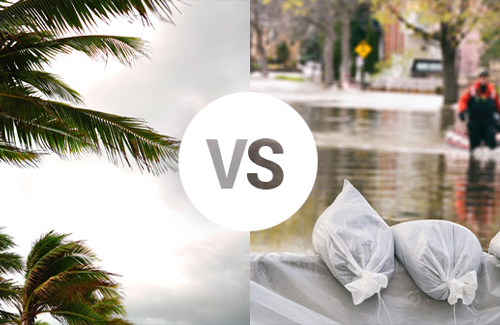Major storms often include high winds and heavy rain, and damage can result from both or either. For example, did wind damage the roof, letting in a big volume of rain, or did severe runoff sweep into the building, damaging the structure and causing the roof to fall?
The specific cause of damage matters because of differences in insurance coverage. Most property insurance (for homeowners, renters, and businesses) excludes flood damage, but typically covers wind damage. In some areas, property owners must obtain separate wind only coverage, which may cover damage from water entering a structure due to wind damage to a roof or wall. And, of course, flood insurance provides coverage only for flood damage.
After a disaster, encourage your clients to reach out to their insurance agent to discuss their damage and make claims. When a property has suffered damages from both high winds over 74 mph (i.e., a hurricane) and flooding, each insurance company will assign their own adjusters to evaluate the losses. Each adjuster will accurately classify which damages might be covered by the specific insurance policies your client holds.
Initially, the adjusters will complete a line-by-line and room-by-room estimate of the damages, with a breakdown of the unit repair costs. Adjusters will also take photos and/or videos and note the damages caused by the applicable peril covered under your client’s policy.
When a question arises as to which peril caused what damage, an expert, like a structural engineer, is often necessary to help determine the source of the specific losses, which will help the adjuster identify the cause. As high wind policies usually provide coverage for every type of damage except rising water and storm surge, wind and flood claim adjusters must work together to reach agreement on what damages should be applied under each policy.
If damage is caused by winds below 74 mph (i.e., a tropical storm or less), it would most likely be covered under your clients’ homeowner’s insurance.
Your clients need the maximum amount available to them to recover after a disaster, and the right insurance significantly diminishes their financial burden. Encourage your clients and potential clients to visit FloodSmart.gov to learn more about the benefits of flood insurance.

